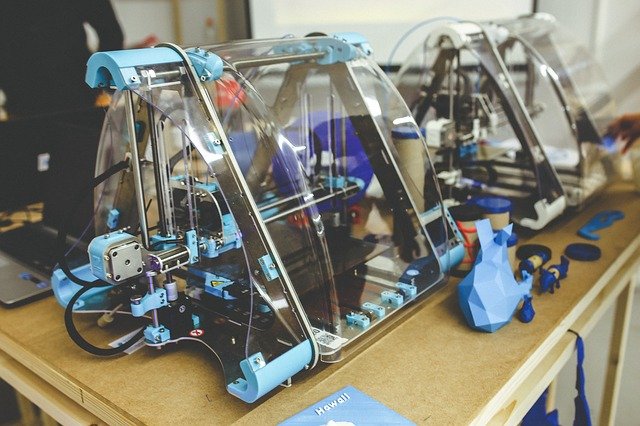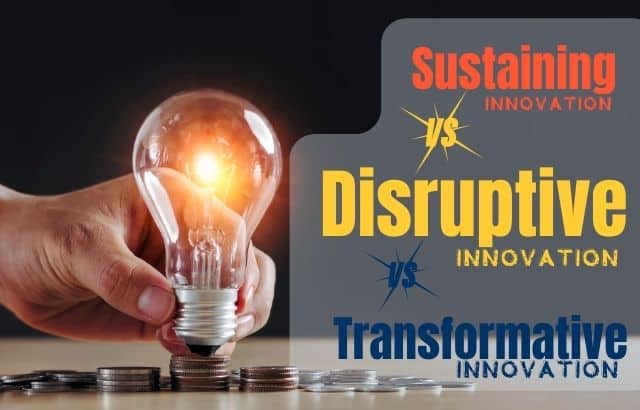Sustaining innovation, disruptive innovation, and transformative innovation are three types of innovation that differ in their scope and impact on the market and society.
TechCo: A Sample Case Study in Innovation and Adaptation
Once upon a time, there was a company called “TechCo” that produced high-quality desktop computers. They had been in the market for over a decade and had established themselves as one of the top computer manufacturers in the industry.
One day, the CEO of TechCo realized that the market was changing, and customers were starting to shift towards laptops and mobile devices. The CEO knew that they needed to innovate to stay relevant in the market.
TechCo decided to focus on three types of innovation: sustaining, disruptive, and transformative.
For sustaining innovation, TechCo made incremental improvements to their desktop computers, such as faster processing speeds and better graphics. These improvements helped them maintain their existing customer base.
For disruptive innovation, TechCo developed a new line of laptops that were more affordable and lightweight than their previous models. This allowed them to enter a new market and appeal to customers who were looking for a more portable and affordable option.
For transformative innovation, TechCo invested heavily in research and development to create a new line of augmented reality devices that would revolutionize the way people interact with technology. These devices would allow users to interact with digital content in a more immersive and intuitive way.
As a result of their focus on innovation, TechCo was able to stay ahead of the competition and remain a leader in the computer industry. By recognizing the importance of different types of innovation, they were able to address the changing needs of their customers and stay relevant in the market.
Table of Contents
Sustaining, Disruptive, and Transformative Innovation: What’s the Difference?
Sustaining innovation

refers to incremental improvements made to existing products, services, or processes to maintain their competitiveness in the market. This type of innovation aims to improve the performance, features, or user experience of existing products, without fundamentally changing the way they work or the markets they serve. Sustaining innovation usually targets existing customers and aims to retain their loyalty while attracting new customers.
Sustaining innovation examples

refers to the incremental improvements made to existing products, services, or processes in order to maintain their competitiveness in the market. Here are some examples of sustaining innovations:
- Apple releasing updated versions of the iPhone with better features and performance every year.
- Automakers introducing new models of cars with improved fuel efficiency, safety features, and technology.
- Food and beverage companies releasing new flavors or variations of existing products to appeal to changing consumer preferences.
- Banks and financial institutions introducing new digital banking features to improve the customer experience.
- Pharmaceutical companies developing improved versions of existing drugs with fewer side effects or more targeted treatment options.
- Software companies releasing updated versions of their products with bug fixes and new features.
- Consumer electronics companies releasing updated versions of products with improved battery life and performance.
- Retailers introducing new store layouts or product displays to enhance the shopping experience.
- Social media platforms adding new features and tools to improve user engagement.
- Healthcare providers introducing new medical devices or equipment to improve patient outcomes.
Disruptive innovation

refers to the introduction of new products, services, or processes that disrupt the existing market and create a new market. This type of innovation often starts by serving overlooked or underserved customers, with a product or service that is initially inferior to existing offerings. However, disruptive innovations gradually improve their performance and features, and eventually overtake existing products and services in the market. Disruptive innovation typically creates new markets and may even render existing markets obsolete.
Disruptive innovation examples

refers to the introduction of new products, services, or processes that disrupt the existing market and create a new market. Here are some examples of disruptive innovations:
- Uber and other ride-hailing services disrupted the taxi industry by providing an on-demand, app-based transportation service.
- Airbnb disrupted the hospitality industry by offering a platform for individuals to rent out their homes and properties to travelers.
- Netflix disrupted the entertainment industry by introducing a streaming service that allowed viewers to watch movies and TV shows on-demand, without the need for cable TV.
- Tesla disrupted the automobile industry by introducing electric cars with longer ranges, innovative technology, and sleek designs.
- Amazon disrupted the retail industry by offering a vast selection of products online, along with fast and convenient delivery options.
- Skype disrupted the telecommunications industry by offering free or low-cost internet-based voice and video calls.
- 3D printing disrupted the manufacturing industry by offering a new way to produce prototypes, parts, and even entire products.
- Online education disrupted the traditional education system by offering more affordable and accessible learning opportunities to students around the world.
- Social media disrupted the advertising industry by offering a new way for brands to connect with customers and promote their products and services.
- Mobile banking disrupted the financial industry by offering convenient, on-the-go access to banking services and transactions.
Transformative innovation

refers to the introduction of new products, services, or processes that fundamentally change the way society operates and interacts. This type of innovation aims to solve complex societal challenges, create new opportunities, and transform entire industries and markets. Transformative innovations are often driven by breakthrough technologies, and they may require significant changes in the way people think, work, and live. Transformative innovation has the potential to create entirely new industries, change the nature of work, and transform the way society functions.
In summary, sustaining innovation focuses on improving existing products, while disruptive innovation creates new markets and transforms existing ones. Transformative innovation aims to solve complex societal challenges and create new opportunities, often by introducing breakthrough technologies.
Transformative innovation examples

refers to the introduction of new products, services, or processes that fundamentally change the way society operates and interacts. Here are some examples of transformative innovations:
- The Internet and the World Wide Web have transformed the way people communicate, access information, and do business.
- The smartphone has transformed the way people communicate, access information, and interact with technology.
- Renewable energy sources like solar and wind power have the potential to transform the way the world generates and uses energy.
- Self-driving cars have the potential to transform transportation by reducing accidents, congestion, and emissions.
- CRISPR gene editing technology has the potential to transform healthcare by allowing scientists to edit genes and cure genetic diseases.
- Artificial intelligence and machine learning have the potential to transform industries ranging from finance to healthcare by automating tasks, improving decision-making, and creating new business opportunities.
- Blockchain technology has the potential to transform industries ranging from finance to supply chain management by creating secure, transparent, and decentralized systems.
- Virtual and augmented reality have the potential to transform industries ranging from entertainment to education by creating immersive and interactive experiences.
- Quantum computing has the potential to transform industries ranging from finance to drug discovery by solving problems that are beyond the capabilities of traditional computers.
- Space exploration and colonization have the potential to transform the way humans live, work, and interact with the universe.










